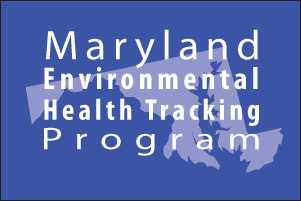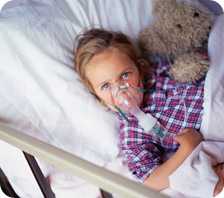Maryland's Success
Answering community concerns about cancer

What is the problem?
Community concerns about cancer and potential links to environmental hazards occur relatively frequently in Maryland. Before the Maryland Tracking Program began in 2002, most concerns about cancer and the environment were addressed only by the Maryland Cancer Registry and possibly local health departments. Maryland had no systematic way to respond to frequently asked questions from individuals, groups, and communities about cancer and the environment.
What did Tracking do?
The Tracking Program, working with the Maryland Cancer Registry, geocoded all residential addresses in the Registry. Now the Maryland Cancer Registry can accurately show cancer data in maps and carry out geospatial analyses of cancer information. Also, for the first time, there is an established process for evaluation of cancer concerns in Maryland. The new process involves a coordinated response that includes the Maryland Cancer Registry, the Center for Environmental Health Coordination, the Maryland Department of the Environment (MDE), and local health departments and is now available on the Tracking Program's Web site.
Improved public health
The Tracking Program has worked with the Maryland Cancer Registry on two major cancer investigations, one in Poolesville and another in Frederick. The first looked at concerns about cancer and drinking water; the second involved concerns about cancer in a community. In both cases, the Maryland Tracking Program provided maps showing the geographic distribution of cancer and geo-statistical analyses of the cancer cases. The results of these two investigations were presented at community meetings. To date, there is no evidence of cancer clusters, but experts were able to answer questions from community residents.
Improving drinking water quality data in private water wells

What is the problem?
About 16% of Marylanders depend on owner-drilled private water wells for drinking water. Private wells can become contaminated with both manmade and naturally occurring hazards. In many cases the private water wells are tested less frequently than public water sources, and the results from private wells are not added to easily accessible water quality data sources. Private well water data are reported to local health departments only when wells are first drilled, when the property is sold, or when home/property improvements are made. Private well water data are usually kept in local health departments and are not easily and quickly available to state environmental public health officials.
What did Tracking do?
The Maryland Tracking Program collaborated with other environmental public health partners in the state to develop a new way for local health departments to upload water quality data on private water wells to a database located at the MDE. Tracking also developed computer software that now makes it possible to store private well water data in the MDE database and then transfer data electronically to the Tracking Program's secure portal.
Improved public health
Having private well water data in one location will help environmental public health officials to better understand water quality in private wells used for drinking water. The data can now be seen using simple-to-use but sophisticated data selection, analysis and display tools such as building data queries or map displays. This could aid responses to drinking water-related inquiries and help inform future decision making. Another benefit is improved efficiency; in response to questions or concerns about this water source, environmental public health officials seeking private well data will be able to save time by both viewing and analyzing these data on the Maryland Tracking Network.
Tracking air pollution and asthma

What is the problem?
In 2007, an estimated 550,000 (12.9%) Maryland adults and 190,000 (13.6%) children reported a lifetime history of asthma. In addition, about 43,000 Maryland residents were treated for asthma in emergency departments, and nearly 9,800 persons were hospitalized for asthma. Fine particulate matter, also known as PM2.5, which comes from vehicles, power plants and wildfires as well as other sources, can go deep in the lungs of adults and children, and can contribute to asthma attacks and more asthma emergency department visits and hospital stays.
What did Tracking do?
The Maryland Tracking Program used asthma emergency room visit and hospital discharge data from the health department and air data from the MDE and the Environmental Protection Agency (EPA) to carry out an EPA- funded project, to examine the relationship between asthma rates and fine particulate levels in and around Baltimore.
Improved public health
This data linkage project, which used 2005-2006 data, found that asthma emergency department visits and inpatient hospital stays went up on days when on-the-ground air monitors recorded more PM2.5 in the air. Local public health officials from Baltimore and nearby communities can use these results to determine if local policies that regulate PM2.5 sources should be re-evaluated and perhaps modified.
Maryland's Grantee Profile
[PDF 333 KB]- Page last reviewed: January 3, 2014
- Page last updated: August 10, 2011
- Content source:


 ShareCompartir
ShareCompartir